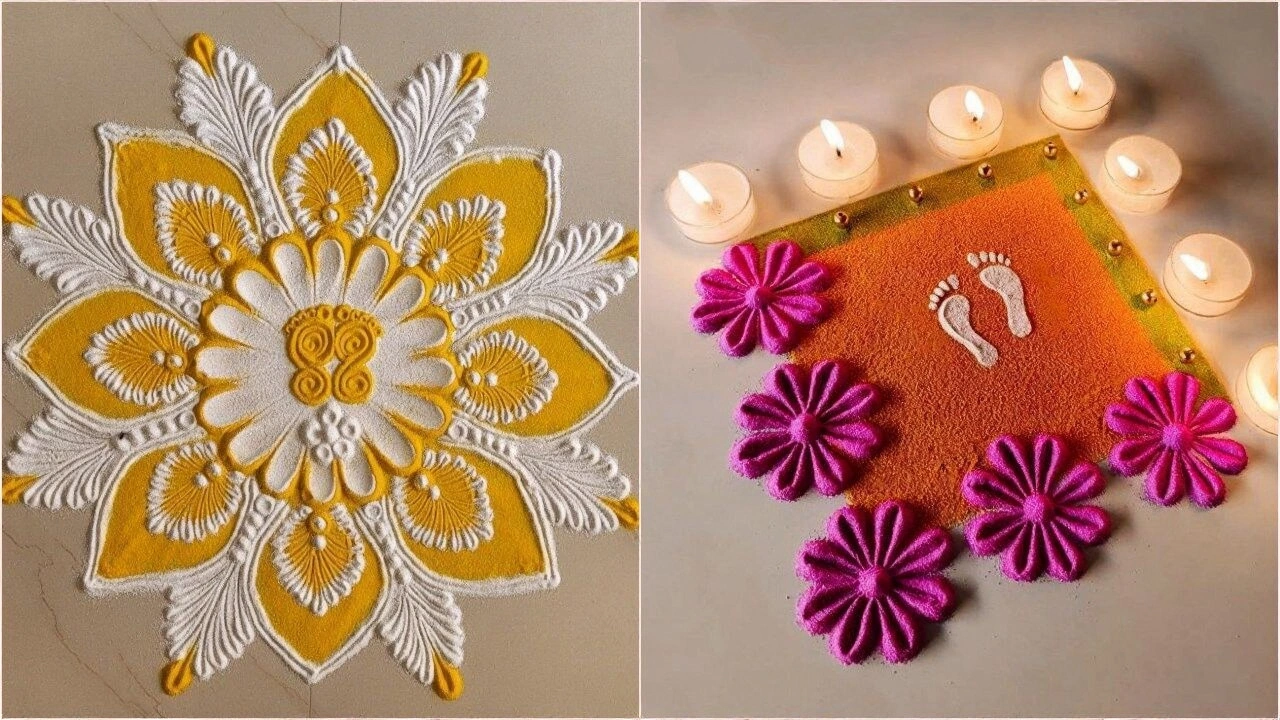Rangoli: India's Traditional Floor Art
When exploring Rangoli, a traditional Indian art form involving intricate patterns created on floors using colored powders, rice, or flowers, often during festivals like Diwali. Also known as kolam in South India, it symbolizes welcome and prosperity. This ancient practice reflects India's rich cultural heritage and continues to inspire modern interpretations across the country.
Rangoli has been part of Indian culture for centuries, with roots tracing back to ancient rituals. Traditionally made during festivals like Diwali, it's believed to bring good luck and ward off evil. Each region has its own style—Rajasthan uses bright colors with floral motifs, while Tamil Nadu's kolam often features geometric patterns made with rice flour. In Karnataka, it's called "Muggu" with intricate dot designs, and West Bengal's Alpana uses rice paste for flowing patterns. These designs aren't just pretty; they're a way to express creativity and community spirit. Families gather to create them together, passing down techniques from elders to younger generations.
What makes rangoli so special is its simplicity and accessibility. You don't need fancy tools—just colored powders, rice, or even flower petals. The process itself is meditative, requiring focus and patience. Many people find it therapeutic, a break from daily stress. It's also eco-friendly; using natural materials means it's biodegradable and safe for the environment. Plus, it's a great way to involve kids in cultural activities, teaching them about their heritage in a hands-on way. Natural dyes are commonly used—turmeric for yellow, beetroot for red, and indigo for blue. In some regions, people even use crushed eggshells or colored sand to add texture. These materials are not only eco-friendly but also easy to find, making rangoli accessible to everyone.
Rangoli designs often have specific meanings. A lotus flower might represent purity, while peacocks symbolize grace and beauty. In some areas, rangoli is made to welcome deities during festivals. During Diwali, it's common to see rangoli at the entrance of homes to invite Lakshmi, the goddess of wealth. The patterns can also vary based on the occasion—weddings might feature more intricate designs with symbols of love and prosperity. In Hindu temples, rangoli is often created at the entrance to welcome devotees and deities. The patterns might include sacred symbols like Om or Swastika, which represent auspiciousness.
Modern takes on rangoli have popped up too. Artists now use digital tools to create virtual rangoli designs, blending tradition with technology. Some even incorporate rangoli into home decor or fashion, making it relevant for today's world. This evolution shows how cultural practices can adapt without losing their essence. Whether you're a seasoned artist or a beginner, rangoli offers endless possibilities for creativity and connection. In South India, kolam is often drawn at the doorstep every morning. It's a daily ritual that starts the day with mindfulness. The patterns are usually drawn with a single continuous line, symbolizing the interconnectedness of life. This practice is deeply ingrained in the culture and is passed down through generations.
In rural India, rangoli is part of daily life, not just festivals. Some communities create rangoli every morning as part of their routine, believing it brings positive energy. The designs can be simple or complex, depending on the time available. It's a practice that's both spiritual and artistic. Urban areas see it mainly during festivals, but even there, rangoli workshops are becoming popular, teaching people the art form and its cultural significance. Many schools now include rangoli-making in their curriculum, ensuring younger generations learn about this art form. Rangoli competitions are held across the country, showcasing the best designs. These events attract participants of all ages, from children to elders, fostering a sense of community and pride in cultural traditions.
While rangoli embodies India's cultural richness, our news platform also brings you the latest updates on sports, weather, and business trends across the nation. From cricket matches to monsoon alerts, explore how diverse stories shape India's present and future.
Diwali Rangoli 2025: Glitter, Eco & iPhone Ganesh Designs Spark Buzz
Diwali 2025 sparks a rangoli revival as glitter, eco‑friendly powders, and an iPhone‑cover Ganesh stencil dominate Indian homes, blending tradition with modern flair.
